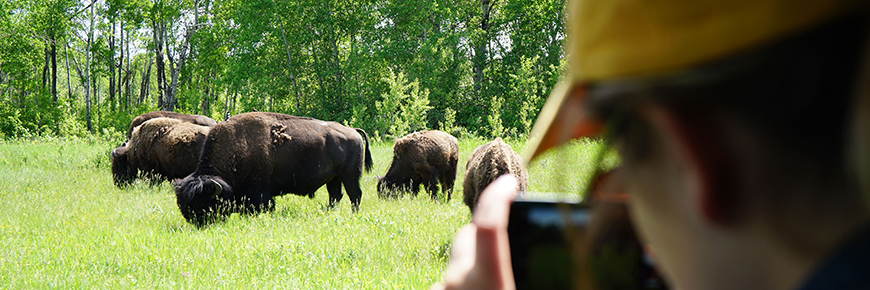
The Do’s and Don’ts of Photographing Wildlife
Riding Mountain National Park
Too often we search for that perfect picture instead of letting the perfect picture come to us. This guide is not about how to take the perfect picture instead it is to ensure that you can enjoy photography while keeping yourself and animals safe.
Note: All photos were taken from safe distances or from vehicles where extreme caution was taken in all instances.
Five things to do while exploring:
- Take photos from a safe place and distance: We all dream of taking that close-up photo that we see in magazines and the truth is that those photos are taken from great distances with very expensive lenses. Even the professionals use great caution and keep their distance when dealing with wildlife. While driving, remain in your vehicle should you come across any animal!
- Have patience: Whether you are outside or in a vehicle, if you stay still and wait you will get that perfect shot. Animals such as moose and deer are less likely to perceive you as a threat if you remain quiet and will continue on doing what they do best!
- Be quiet and listen: When you are outside exploring, you do not want to scare away your subjects. Most wildlife can hear from great distances and something as simple as kicking some loose gravel can send animals running! Exercise caution and DO make noise if you believe a dangerous situation is forthcoming. Safety first!
- Optimum timing and light: Any photographer will tell you that pictures are best taken an hour after dawn and an hour before dusk. The same is true for seeing wildlife! Most animals feed in the early morning or late in the evening when it is generally cooler outside. Plan your trip accordingly to get those awesome shots!
- Be alert: You never know when an animal will appear out of the woods or in a ditch. Do a little research on animal behaviour before heading out to better prepare yourself for a wildlife encounter.

Five things NOT to do when you encounter an animal:
-
DO NOT bait or feed an animal: It is illegal, and you can put yourself and others at risk. Feeding animals is very dangerous as the animal will quickly become habituated to humans, cars, or whatever it thinks will feed it. Anyone minding their own business may become targets for these animals! Do not put the lives of innocent people and animals at risk.
- DO NOT search for babies: We all love baby animals and believe it or not, their moms like them too! Not only will put yourself at risk of an attack by mom, but you may unintentionally create a scent trail for predators that will lead them straight to their next meal. If you think there are babies nearby, or find one laying in the grass, keep back and leave the area immediately. They are hidden away for protection!
- DO NOT approach any wild animal: You have heard it a million times before but it continues to happen. Wildlife are very unpredictable and even the gentlest creatures can be dangerous. Wildlife can attack without any warning so give them space and let them do their wildlife things! If you encounter an animal and it shows signs of aggression, IMMEDIATELY back off and give it space!
- DO NOT assume you can outrun any animal: That 1500 pound bison you are looking at can reach speeds up to 65km/hr in no time flat. In other words, an agitated bison at top speed can run 50 meters in roughly 3 seconds, or the amount of time it takes to open, get in, and close a car door. Depending on how agitated the animal is, even if you get into a vehicle it might not stop. This holds true for all large animals such as elk, moose and bears.
-
DO NOT stress: If you are out exploring and come across an animal, do not be scared! First and foremost, give the animal space. Secondly, remain cool and calm to avoid spooking the animal unless you feel you are in danger, in which case it is definitely okay to make some noise. Once the animal understands you are not a threat, start snapping photos!

- Date modified :